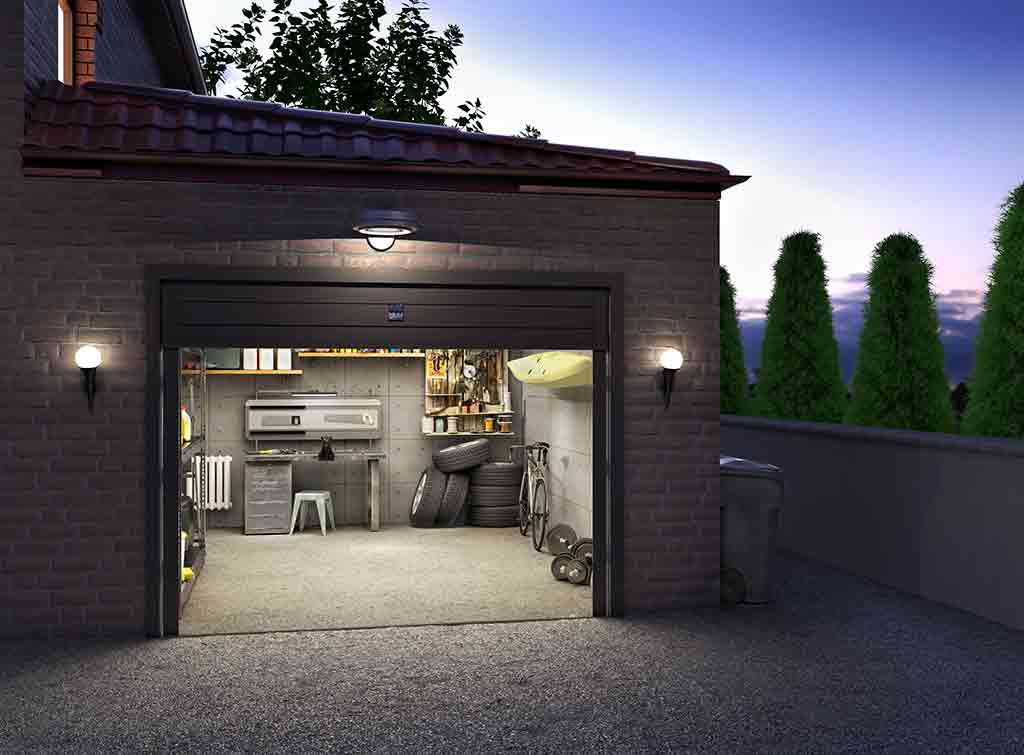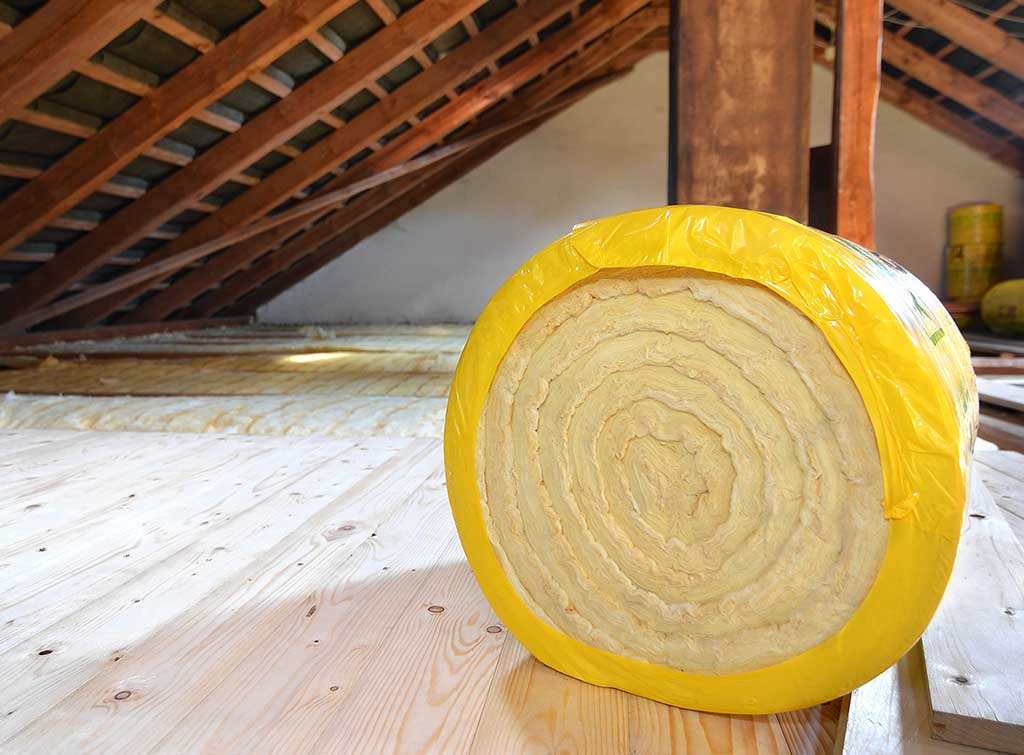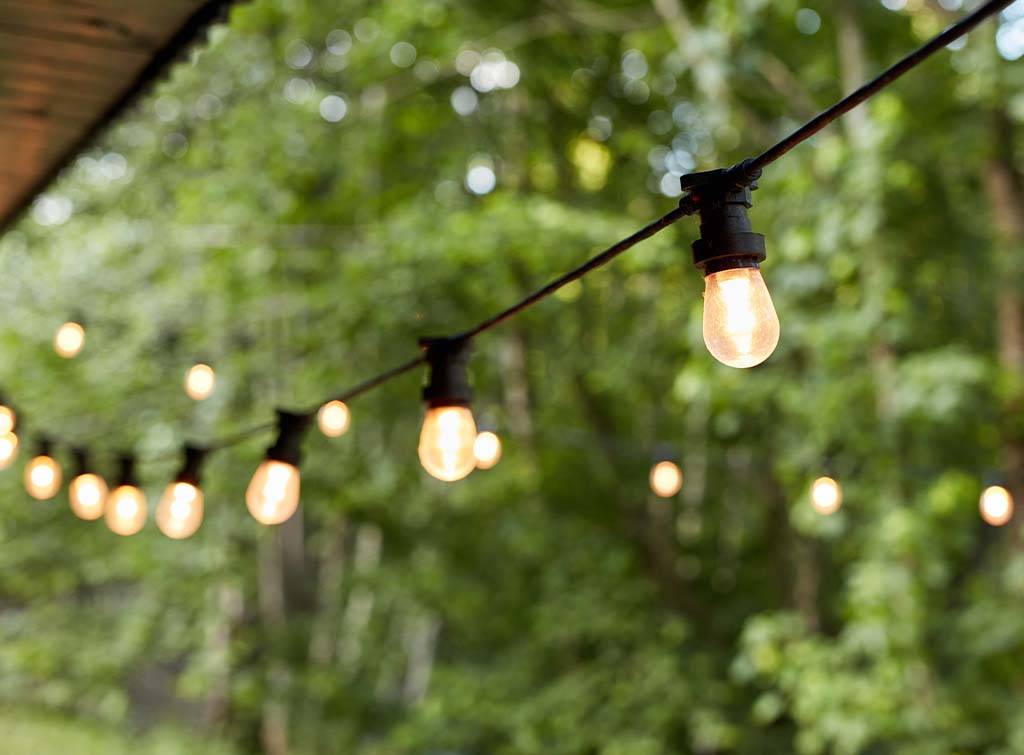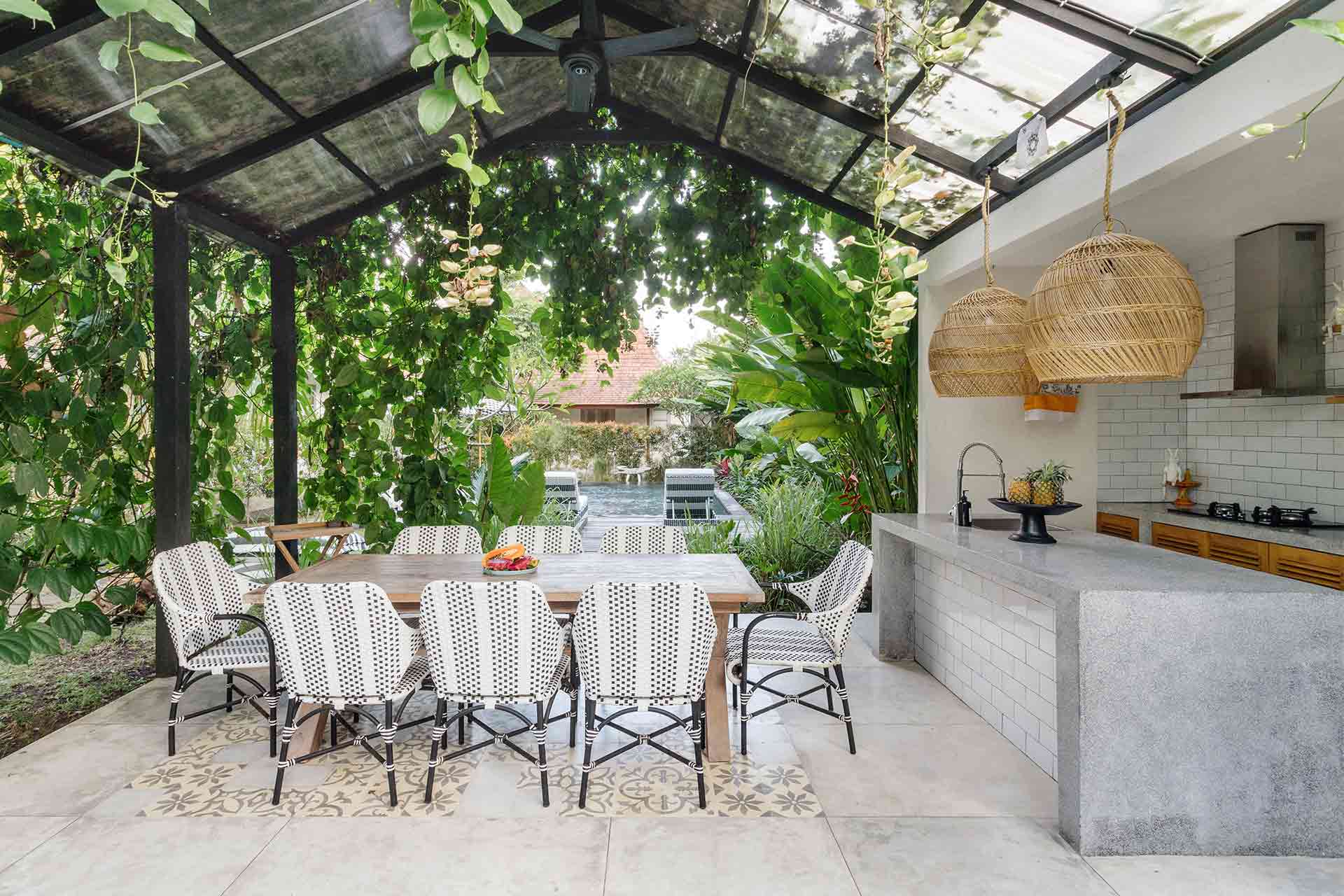Blog>Planning Guides>Plan your garden redesign in 2025 with this expert guide
Last updated: 9 January 2025
Plan your garden redesign in 2025 with this expert guide
Covering everything from planning and layout through to ideas, inspiration, and budget, this guide will help you with your garden redesign; creating the outdoor space you've always dreamed of.

The opportunity to redesign your garden gives you the chance to create your dream outdoor space, complementing both your home decor and your personal style.
But while garden redesign is an exciting project, it does require careful planning and consideration.
In this post, we'll guide you through every step, from planning to ideas and inspiration to budget, including guidance on hard landscaping, plant selections, outdoor lighting, and more.
See the tradespeople we've checked and recommend for your job
Landscape garden planning
Before you launch your garden redesign project, it's essential to spend some time planning the various elements, including:
Purpose and function
Site analysis
Budget
Style and themes
1. Purpose and function
How do you want to use your garden? Do you want it to be a space for entertaining guests, a peaceful retreat, or a play area for the children?
Answering these questions will help to shape the layout and the features that are important to include in your garden. For example:
If you want your garden to be an entertaining space, consider where the dining area should be. This could be influenced by the position of the evening sun, making it an ideal spot for some outdoor furniture
Perhaps you want to create an outdoor kitchen or a BBQ area. If so, where would be the most convenient place to build it? Near the kitchen to avoid traipsing up and down the garden with plates of food, perhaps
Want to enjoy a morning coffee in the sunshine? Check the position of the morning sun and plan the optimal position for some garden seating
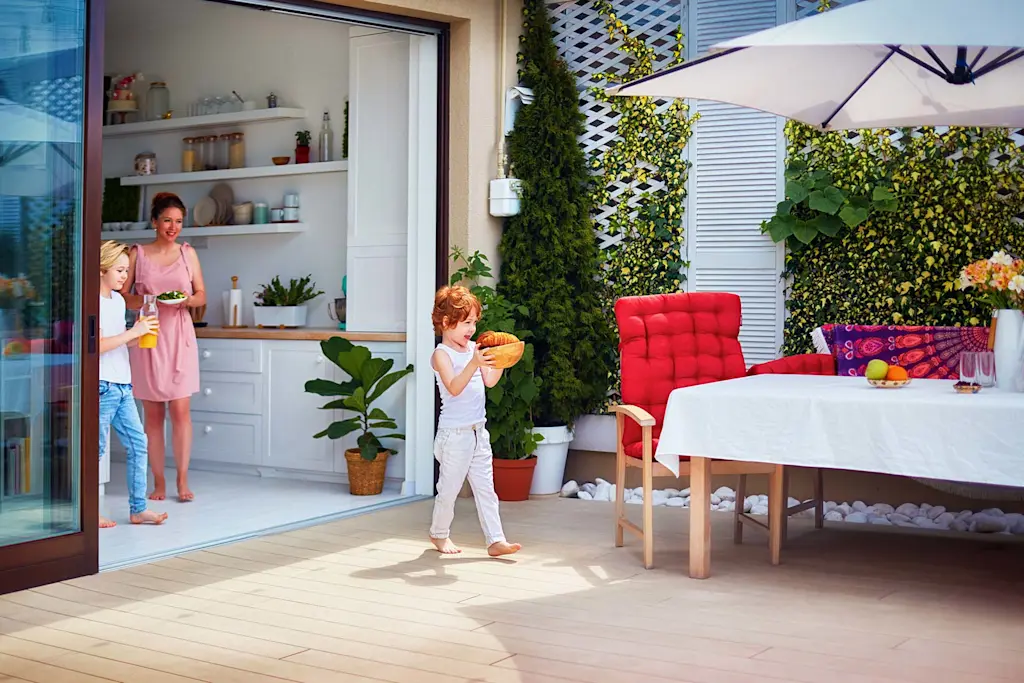
2. Site analysis
As with any renovation, it's essential to spend time in the space to understand it better, noting:
Where the sun hits your garden at different times of the day
What type of soil you have and how well it drains
Existing plants or structures you want to keep
Whether there are any elements you can recycle or repurpose
This will not only help when planning your layout and hard landscaping, but also the best type of plants to include too.
3. Budget
If you've watched garden redesign programmes on TV, you'll appreciate it's possible to redesign your garden for just a few hundred pounds or to ramp the budget up to tens of thousands of pounds.
It's therefore important to decide on your budget at the start of the project.
Depending on what you want to include in your plans, this may need to cover hard landscaping materials, any labour costs, plants, and outdoor furniture.
4. Style and themes
With various different garden styles and themes, there's limitless scope to create your ideal sanctuary.
From contemporary to minimalist, cottage to tropical, there's a vast array of options to choose from. But how do you narrow your choices down?
Create a mood board of gardens you're drawn to, collecting ideas and design elements in one place. This helps to define your visual concept
Visit local gardens to identify plants you like, taking inspiration from their landscaping too
Look through gardening magazines to identify your favourite themes and styles
Of course, you can also book a consultation with an experienced landscape gardener or garden designer to help plan your new outdoor space.
Find a landscape garden planner in our leading directory
Save time searching. Use our handy search function below to find the best landscapers in your area.
See the tradespeople we've checked and recommend for your job
Struggling for time to find the right tradespeople? Let us search for you.
Fill out our online form and we’ll send it on to Checkatrade tradespeople who are checked by us and reviewed by real people.
Garden redesign ideas and inspiration
With your garden plans sorted, you can start getting creative!
In this section, we provide guidance on the various elements of garden redesign that, together, will bring your vision to life. It includes:
Hard landscaping options
Garden styles
Colour schemes
Selecting landscaping plants
Choosing the right outdoor furniture
Outdoor lighting ideas
Hard landscaping options
The hard landscaping in your garden provides the base for the softer elements such as grass and plants. It could include any combination of:
Retaining walls and fencing
Paving and decking
Walkways and paths
Sleepers and edging
Planters
Pergolas
Outdoor kitchens
Water features
Mirrors and decorative features
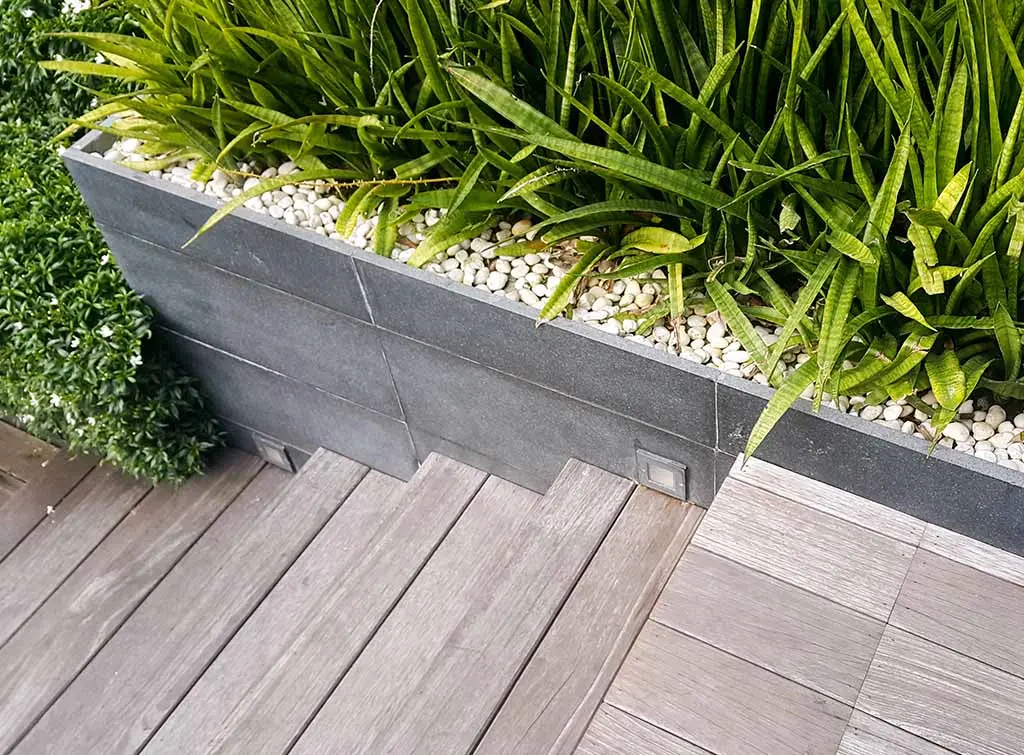
Hard landscaping provides a structure and flow to your garden, by building in pathways, decking areas, patios, and fencing or walls.
It can also be used to create a focal point, for example, a water feature, pergola, or an arbour (arch).
With a myriad of different hard landscaping options available, it can feel overwhelming knowing where to start.
We recommend using the layout and mood board you created in the planning stage to identify the hard landscaping required to achieve your desired look.
Keep reading for help choosing the right landscaping for your style of garden.
Tip: Consider the eco-friendly features you could incorporate in your new garden. For example, water butts, compost bins, and recycled materials from your existing garden rather than sending them to a landfill.
Your garden style
As we touched on earlier, garden design is limitless, enabling you to reflect your interior style in your outdoor space. Let's take a look at some of the most popular garden styles.
1. Contemporary and minimalist
Clean lines, sleek materials, and simplicity will create a contemporary and minimalist garden.
Add geometric shapes and modern materials such as concrete, metal, and glass. Create a balance by adding ornamental grasses, sculptural shrubs, and single plants.
Carefully placed accent lighting will highlight architectural features and/or plants to create a serene atmosphere.
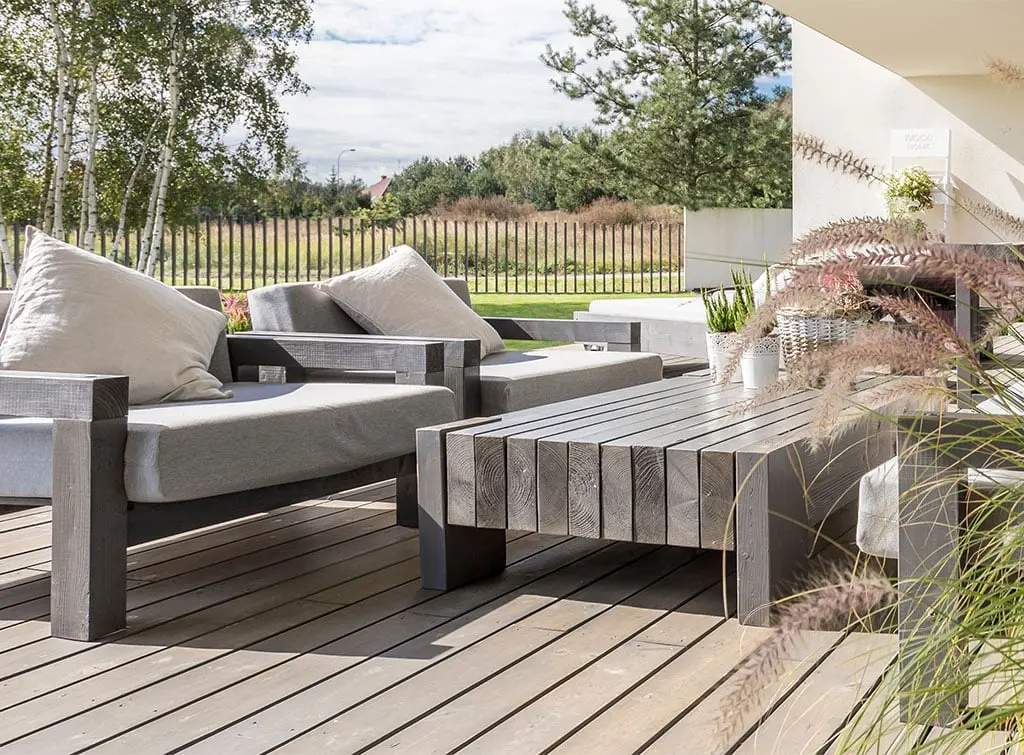
2. Cottage garden charm
Colourful flowers, lush greenery, and a relaxed layout are synonymous with cottage garden style.
Combine winding paths with classic perennials such as lavender, delphiniums, foxgloves, and hollyhocks to create a timeless, romantic feel.
An arbour with climbing roses and a cosy seating area are the perfect finishing touches for a charming cottage garden.
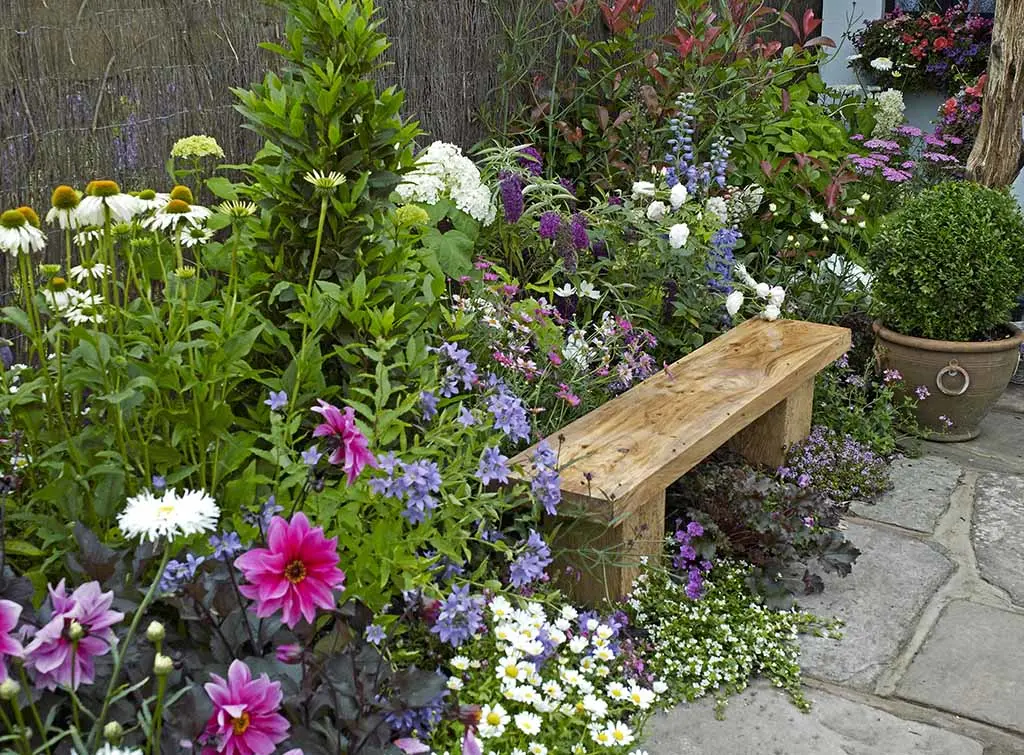
3. Japanese Zen
Another popular style is the Japanese-inspired garden.
Evergreen trees and shrubs such as Japanese maple, combined with bamboo and ornamental grasses among gravel and carefully placed rocks create a tranquil space.
A peaceful seating area and a serene water feature will complete the look.
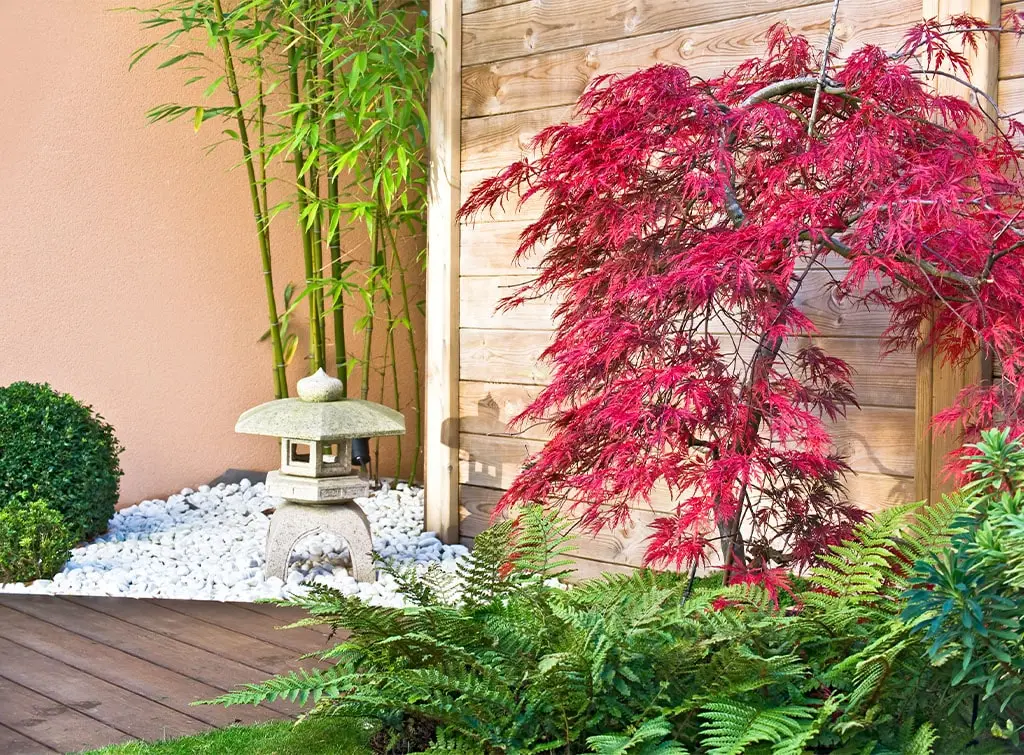
4. Mediterranean oasis
A Mediterranean garden exudes warmth, colour, and relaxation.
Achieve this with plants such as lavender and bougainvillea (the 'paper flower'), alongside olive trees, terracotta pots, tiled surfaces, and rustic wooden features.
Fragrant herbs and citrus trees will add to the sensory experience.
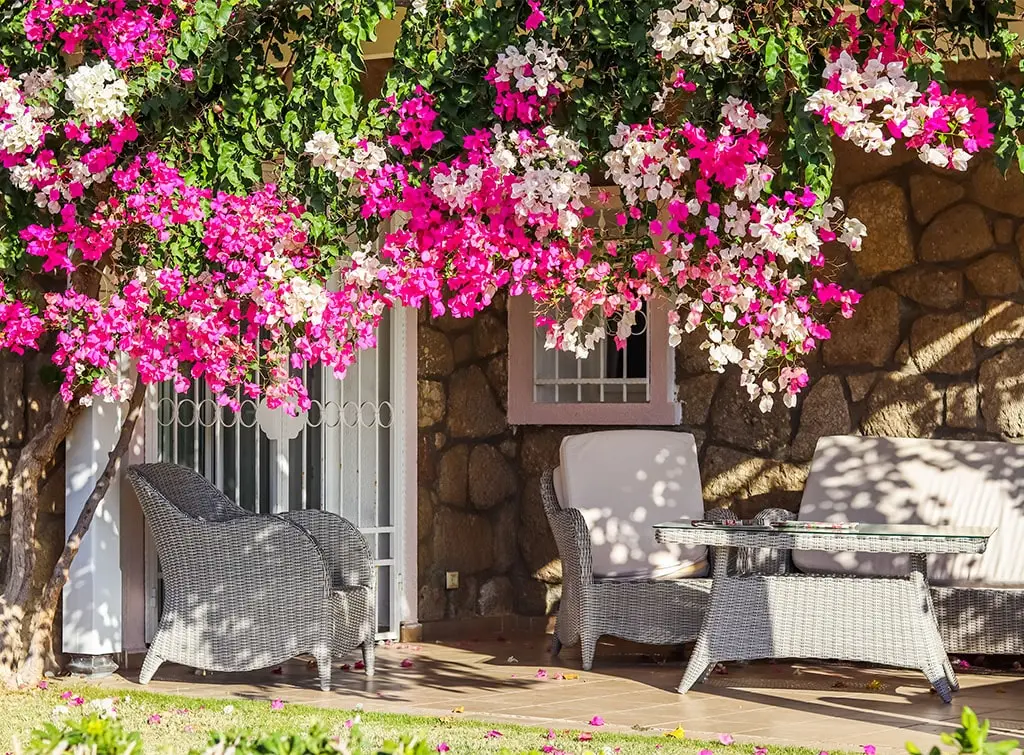
5. Formal elegance
For a sophisticated and elegant outdoor space, opt for a more formal garden design.
Symmetrical layouts are key here, with geometric patterns, clipped hedges, and structured topiaries alongside well-manicured boxwood, roses, and peonies.
For an impressive finishing touch, consider a water fountain, statue, or ornate urn as a focal point.
Tip: Make sure your local climate and conditions will support the style of garden you want. That is, the plants reflective of your chosen style can grow in your soil and climate.
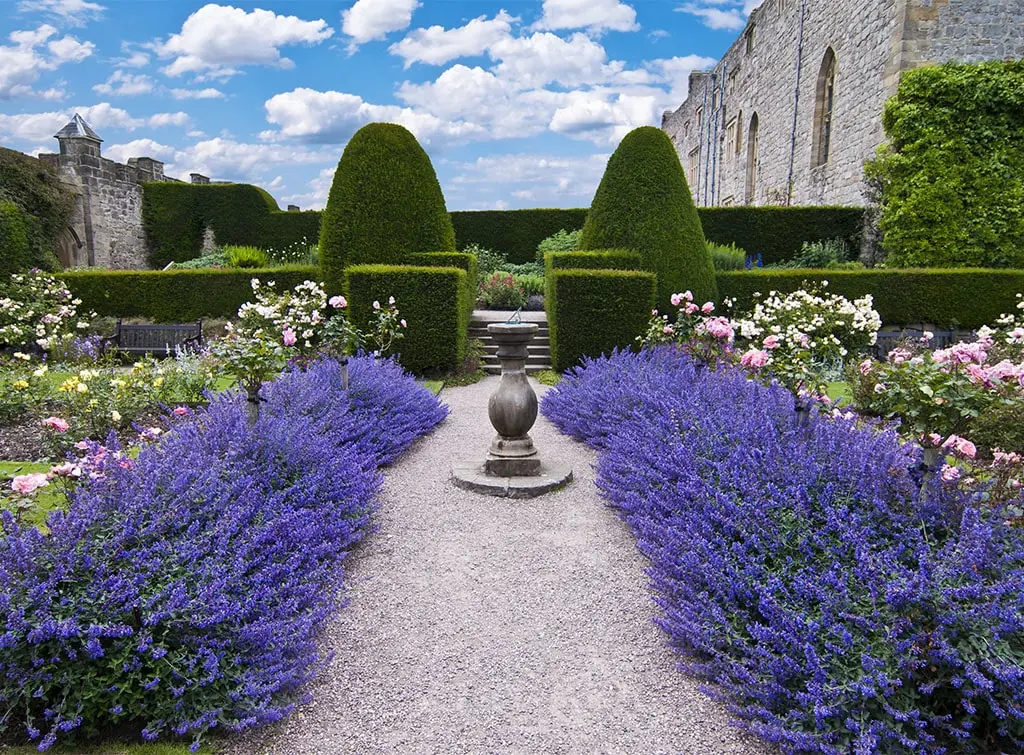
Garden colour schemes
Let's take a look at some popular garden colour schemes. Remember, your colour scheme will not only be achieved through your choice of plants but your hard landscaping too.
1. Serene neutrals
A neutral palette will create a calm and sophisticated atmosphere in your garden.
Shades of white, cream, beige, and grey work well as a serene backdrop for the textures and shapes of plants to shine.
Combine different textures among your foliage, for example, silver-leaved plants and grasses with pops of vivid greenery.
2. Vibrant tropical
A vibrant colour scheme will bring energetic vibes to your outdoor space.
Embrace bold and striking colours in your choice of plants including fiery oranges, sunny yellows, electric blues, and deep purples.
Pair hibiscus and bougainvillea with lush, tropical foliage to balance the intensity.

3. Pastel dreams
For something more muted and mellow, go for pastel colours to create a charming, romantic feel.
Delicate pink, lilac, peach, and blue flowers will add a gentle touch to your garden, for example, roses, hydrangeas, and delphiniums.
Combine this with white or cream accents for a relaxing retreat.
4. Mediterranean blues
Is there a colour more synonymous with the Mediterranean shores than vibrant blue?
From deep navy to sky blue, there's a wide selection of beautiful plants and flowers in this colour scheme, including agapanthus, salvias, and cornflowers.
Complement these vivid hues with accents of white, terracotta, and silver-green foliage to capture the perfect balance.
Choosing landscaping plants
Selecting the right landscaping plants is a crucial step in any garden redesign project.
Careful consideration must be given to the plants you choose to achieve the aesthetic you're after, but also to ensure they'll thrive and provide year-round interest.
These are our top tips for choosing the right landscaping plants for your garden redesign:
1. Climate and conditions
Your garden's climate, sunlight exposure, soil type, and moisture levels will all impact the plants you select.
Research the plants that are well-suited to your conditions to help you choose varieties that will thrive.
2. Purpose and function
It may not be immediately obvious, but plants contribute more than just visual interest and colour to outdoor design.
Plants can work to create privacy, add texture, attract pollinators, and provide shade. They can even help to 'zone' certain areas, for example, around a dining area.
The layout you created in the planning stage will help you to determine the purpose of the plants in each area of the garden.

3. Plant characteristics
Here's where knowledge of horticulture is really helpful. If you need some expertise, don't hesitate to search our directory of recommended landscapers to see who comes highly recommended in your area.
As a guide, there are four main things to consider:
Size. Check how tall and wide your chosen plants will be once mature and allow space for that growth when planting
Growth rate. Check how quickly your plants will reach maturity. If you're impatient, you might choose to invest in getting a more mature plant
Seasonal interest. Research when your chosen varieties bloom in order to avoid selecting plants that all flower at the same time of year
Maintenance. If you're keen on low-maintenance landscaping, avoid varieties that require regular pruning and deadheading
4. A balanced palette
The right variety of plants will create visual interest and support your overall garden style, but how do you get the right balance?
Colour. Opt for complementary colours for a pleasing visual effect, or contrasting colours for more impact
Texture. Create interest with a variety of leaf shapes, sizes, and textures, mixing fine foliage with bold, broad leaves
Layering. Choose a selection of tall plants and trees, medium-sized shrubs, and low groundcovers to create layers and visual depth
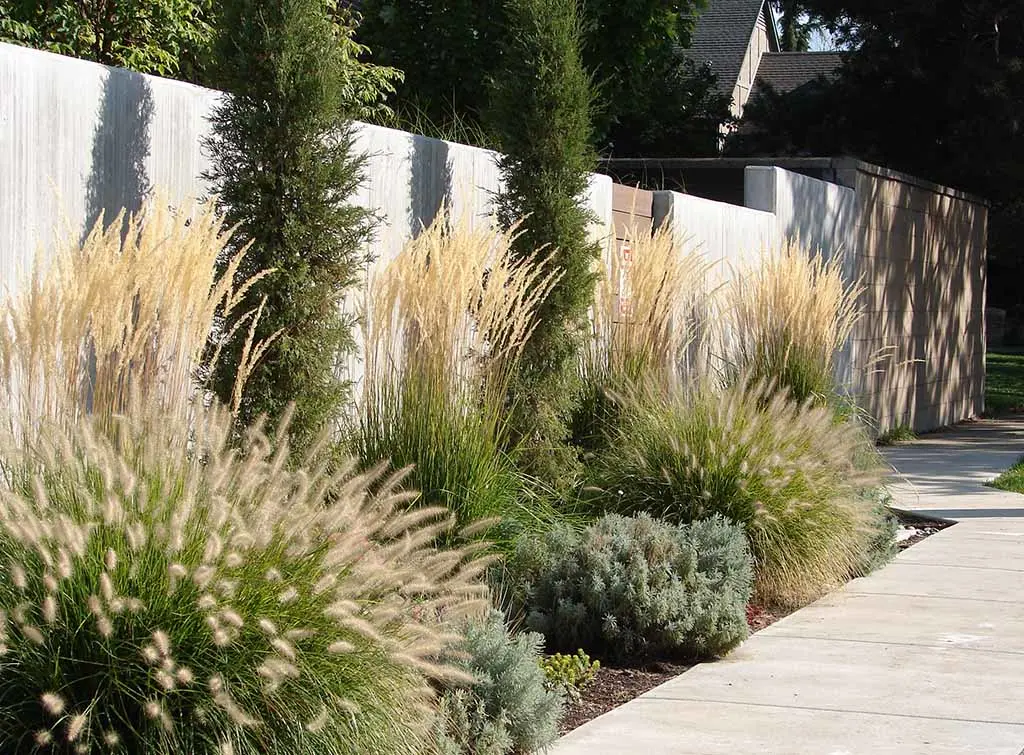
Not sure where to start?
Find an experienced garden designer to help create your dream outdoor space.
See the tradespeople we've checked and recommend for your job
Outdoor furniture
The outdoor furniture you choose is crucial to be able to enjoy your redesigned garden in comfort.
Here's how to choose stylish, functional, and inviting pieces:
1. Needs and lifestyle
How will you use your garden? Will it be a private sanctuary for just you and the dog, or do you enjoy hosting large gatherings?
Do you want to use your garden for alfresco dining, lounging in the sun, or a bit of both?
Considering these factors will help to determine the type, size, and style of furniture that will best suit your needs.
2. Durability
Outdoor furniture is exposed to the elements so it's important to select durable materials that are able to withstand rain and sun.
Of course, if you have suitable storage space for your outdoor furniture, you won't have to leave it outdoors all year round.
3. Comfort and functionality
If you want to enjoy long, relaxing hours in the garden, look for features such as adjustable backs, reclining chairs, or built-in ottomans.
Many items of furniture have handy built-in storage space for cushions, modular pieces for versatility, and foldable options for easy storage.
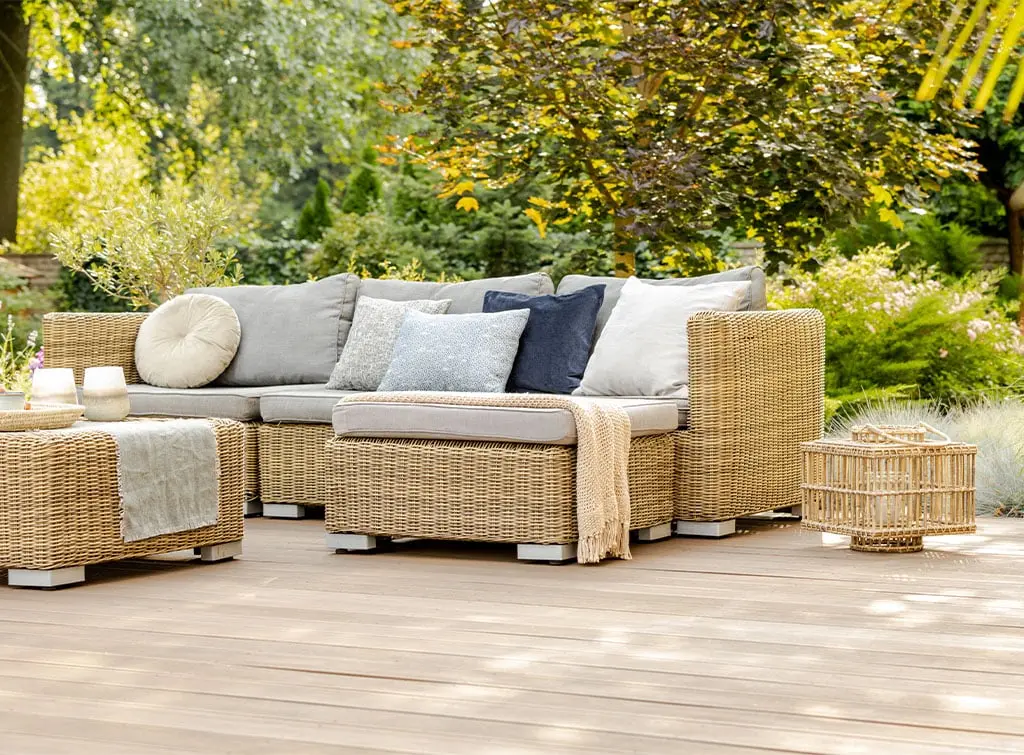
4. Size and scale
While smaller gardens may suffice with a bistro set or a small dining table with folding chairs, you have more scope with more space.
In a larger garden, you may wish to create different zones for different activities. For example, a sofa for lounging, a dining set for evening meals, an egg-shaped hanging chair for reading, and a comfortable area for your morning coffee.
5. Style and aesthetics
Your outdoor furniture should complement your overall garden design.
Whether you're planning a contemporary, minimalist, or cottage-style garden, go for colours, finishes, and styles that match your garden's theme.
6. Quality and maintenance
Look for furniture that has weather-resistant properties and check whether it comes with protective covers.
Outdoor lighting
Outdoor lighting plays many different roles within a garden. It can:
Highlight architectural features
Create an inviting atmosphere
Increase safety and security
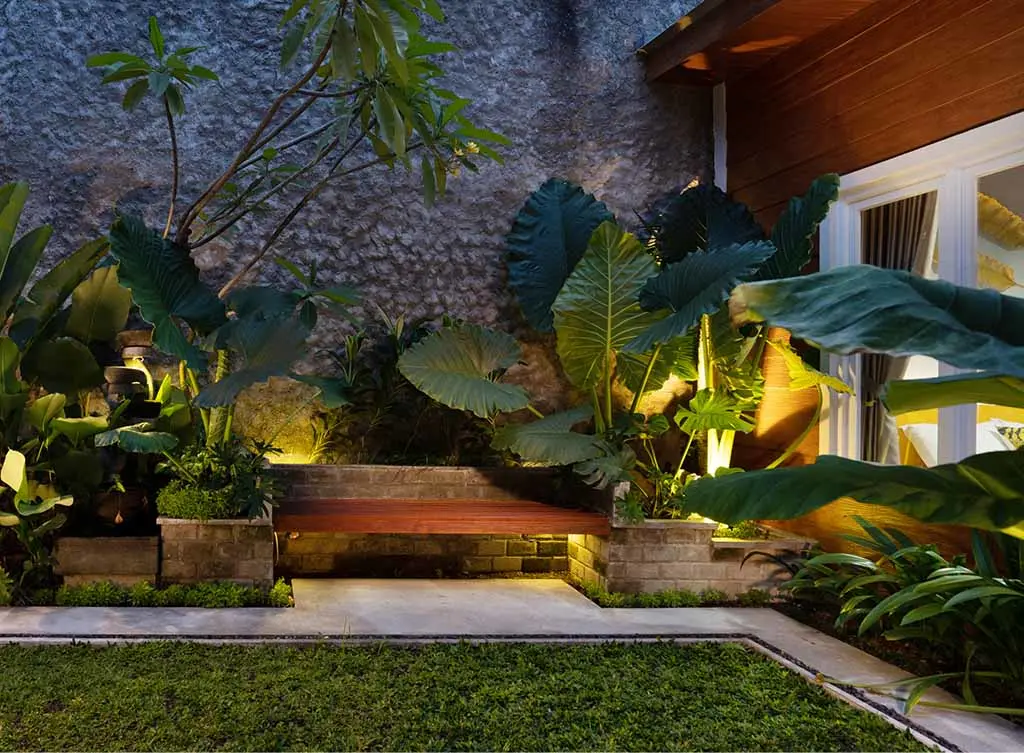
But how do you select the right outdoor lighting to accentuate your beautiful garden plans?
1. Consider its purpose
What do you want your lighting to achieve? Do you want to highlight specific garden features, illuminate pathways, or create a cosy atmosphere for evening gatherings?
Create a plan before installing any fixtures and remember to use a qualified electrician for any electrical work.
2. Lighting techniques
Just like inside your home, good lighting is important to create desired effects.
Ambient lighting from wall-mounted fixtures will illuminate the whole garden
Accent lighting such as uplights or spotlights will highlight specific focal points, e.g. plants or sculptures
Pathway lighting such as bollards, step lights, or solar-powered stakes can help to safely and elegantly illuminate walkways
Task lighting will help to direct lighting in specific functional areas, for example, over an outdoor kitchen

3. Style
There's a huge variety of styles of outdoor lights, so you can be sure to find something that matches your overall design.
Outdoor lights in black, stainless steel, brass, and copper are popular options, complementing many different styles of garden.
4. Energy efficiency
Opt for LED lights for long-lasting, energy-efficient performance. Most bulbs will offer a choice of colour, for example, warm white or cool white, with varying intensities.
Also, consider motion sensors or timers to avoid wasting energy.
Need help bringing your ideas together?
Find an experienced landscaper to help create your dream outdoor space.
See the tradespeople we've checked and recommend for your job
Garden redesign costs
The cost of landscaping your garden will vary depending on the size and scope of the project, the plants and hard landscaping you choose, and the outdoor furniture and lighting you select.
Most landscapers will charge on a per-project basis, itemising the various elements, including labour costs.
Landscaping prices can start from around £2,000 for a small, budget redesign garden, upwards to the region of £10,000 for a mid-range, medium-sized garden, to more than £40,000 for a large, bespoke garden redesign.
Our guide to landscaping costs will help you to identify and plan out the various costs involved in your garden redesign project.
Find an expert garden landscaper to help with your outdoor design
Ready to bring your vision to life? Enter your postcode into our leading directory to find experienced landscape gardeners in your area.
See the tradespeople we've checked and recommend for your job
The Checkatrade guarantee
With our free guarantee, your job is covered for up to 12 months to the value of £1,000*.
To make sure your job is guaranteed, simply follow these three steps:
1. Book through Checkatrade
Use the member’s Checkatrade contact details to get in touch so we can register your job.
2. Keep a record of your job
If you need to claim, we’ll ask for more details.
3. Leave a review
When your job is done, simply leave a Checkatrade review.
*Other eligibility criteria and T&Cs apply.
See the tradespeople we've checked and recommend for your job
More Planning Guides
See the tradespeople we've checked and recommend for your job

